Another site from the GMU sedimentology field trip in April: An outcrop on Route 33 in Brandywine, West Virginia, showing the Millboro Formation. It’s mostly shale, with some intriguing sandstones, too. There are fossils and diagenetic carbonate nodules (concretions).
Here’s the outcrop, the largest GigaPan I’ve taken so far (7.9 billion pixels):
link
The shale itself looks… like shale. It’s fine-grained, and dark (high carbon content, suggesting low oxygen levels when deposited). It contains articulate brachiopods that are also suggestive of less-than-ideal-conditions-for-animals conditions. Here’s a look down on a bedding plane, for instance:

The little bumps are brachiopods. The trained eye will also pick out some subvertical crenulation cleavage ‘wrapping’ around these little guys:
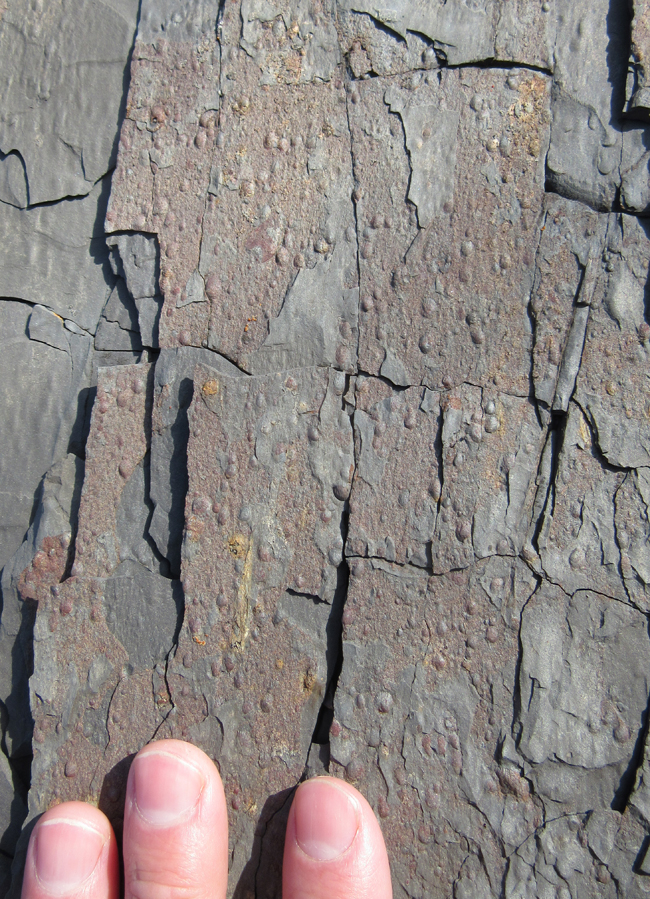

This next slab has the brachiopods, too but also seems to contain a few snails (spiral shapes):


Another fossil is a long, spear-point-shaped thing. Does anyone have any idea what it is?



Maybe acanthodian spines? (early sharks)

Here’s a GIGAmacro image of this fossil suite (tiny articulate brachiopods and some long spear-like things)
link
The shale breaks apart with a characteristic pattern called “pencil cleavage”:


Some close ups of the sandstone layers, which show cross-bedding, climbing ripples and convoluted bedding, suggesting rapid deposition:

This one is a boffo example of convoluted bedding:

Annotated, with laminations internal to the sandstone bed traced out in blue:
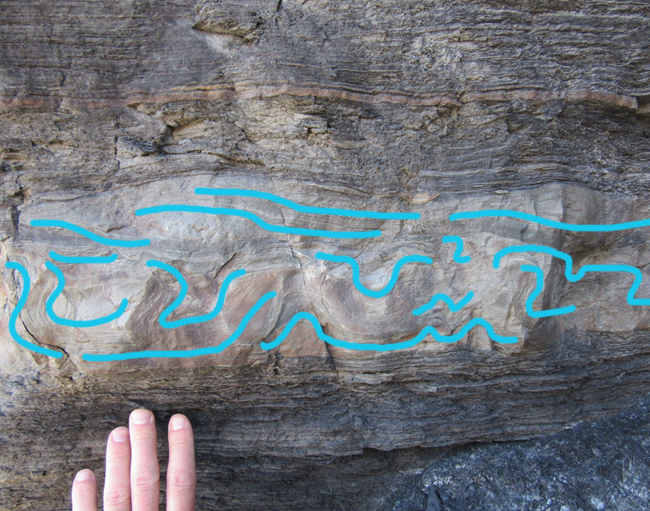
Note that the shale above and below is NOT deformed – this is soft sediment deformation rather than tectonic deformation of rock. Look closer:
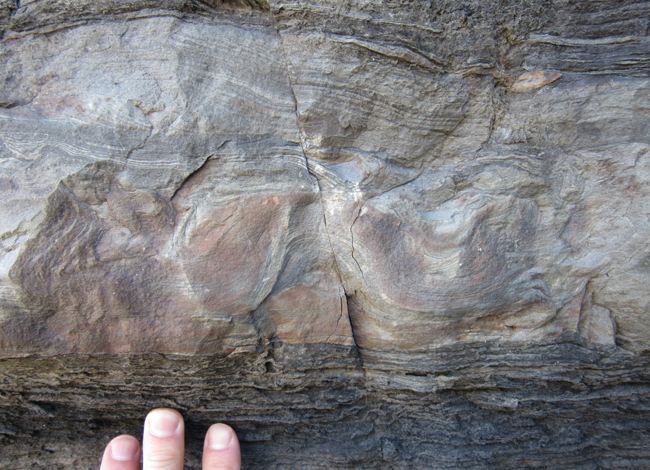
Here is a sample that had weathered out of the outcrop. I took it, of course.
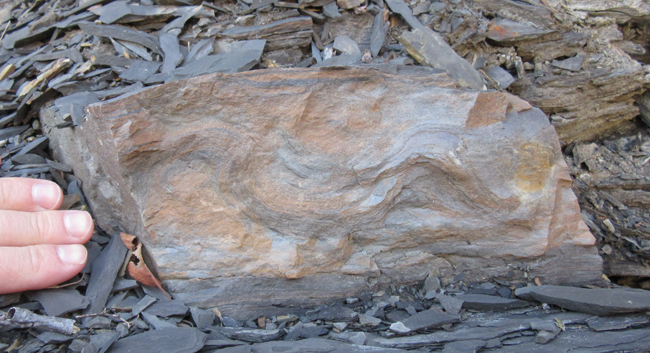
Explore it in this GIGAmacro image:
link
Another sandstone package, lower in the outcrop (older):
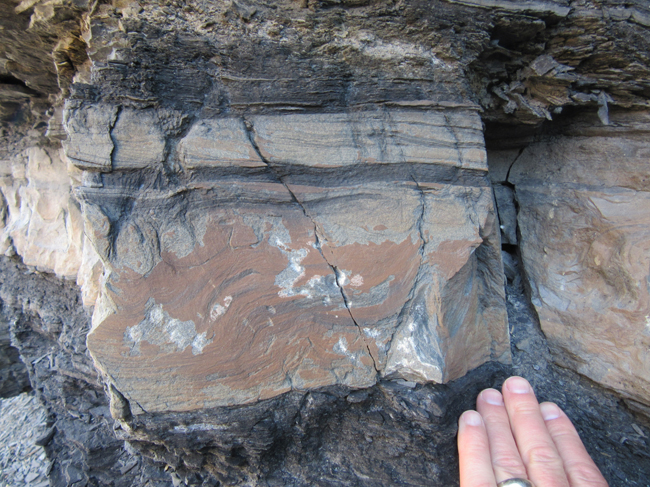
This next shot is a close-up of the upper left corner of the previous image:

Further along strike, apparent climbing ripples could be seen:

Here’s a loose climbing ripple sample, with out-of-focus West Virginia scenery in the background:

Close-up showing the changing in angle of the bedding in this same sample:

Annotated:
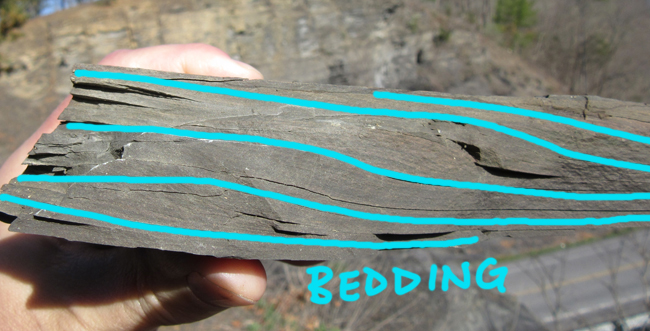
Here is a GIGAmacro image of the climbing ripples, side (cross-sectional) view:
link
Sandstone chunk showing cross-bedding and plane laminations:

Carbonate nodules appear as positively-weathering features in certain horizons:

Here is a little tiny one:

In outcrop:
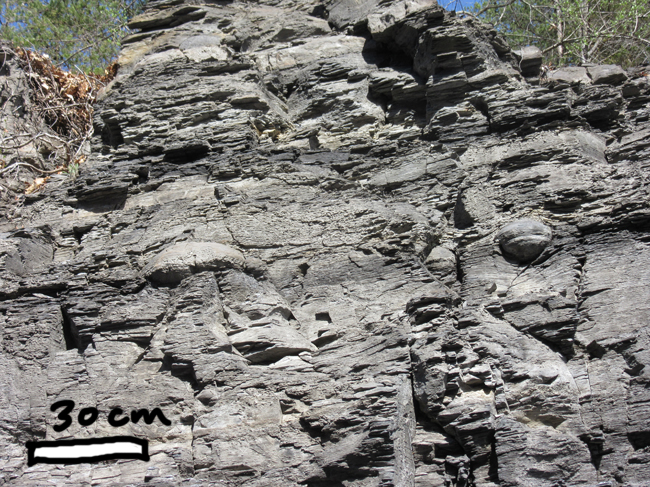
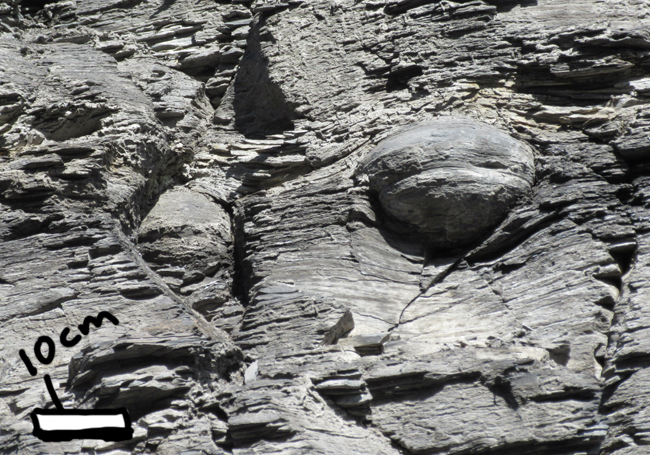
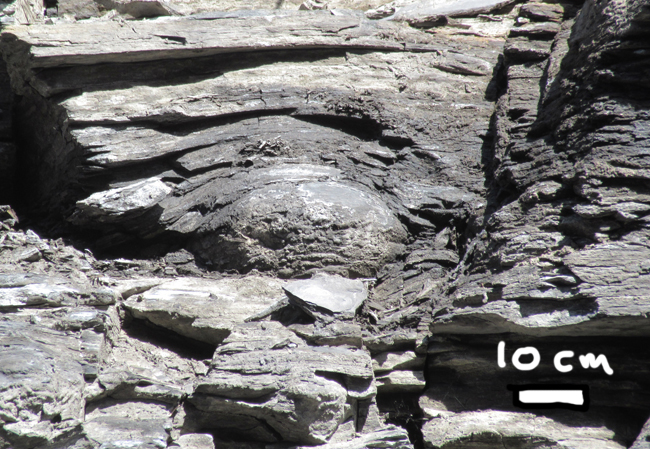
Here is a GIGAmacro image of a carbonate nodule, top view:
link
What fun! There’s a lot to see at this site.

Is your mystery spear fossil a belemnite?
Considering these strata are Devonian, that doesn’t seem like the most likely option.
Note to self: When you have the urge to double check the age range of a fossil when you’re in a hurry–DON’T POST! 😀
I think that your “shark tooth” is styliodina, a shell with a classic midline fold, ofternconsidered related to tentaculites because both a long narrow shells whose biology is unclear.
Thank you!
I think your mystery fossil might be an orthocone cepahlopod.
Mike Huggins wrote to me via email about this (unable to post directly for some reason):
Test. That was my long-winded email to Callan. In short, it’s amazing how close these “orthocones” look to my 35-55 my younger cones. I didn’t recall seeing anything quite like them before in Appalachian rocks.
Oh, the accompanying fauna with my Mississippian versions were pelecypods Aviculopecten, Phestia, & Sedgwickia? (the dominant fauna); brachiopods Tetracamera, Lingula, and a productid; and an ostracode.